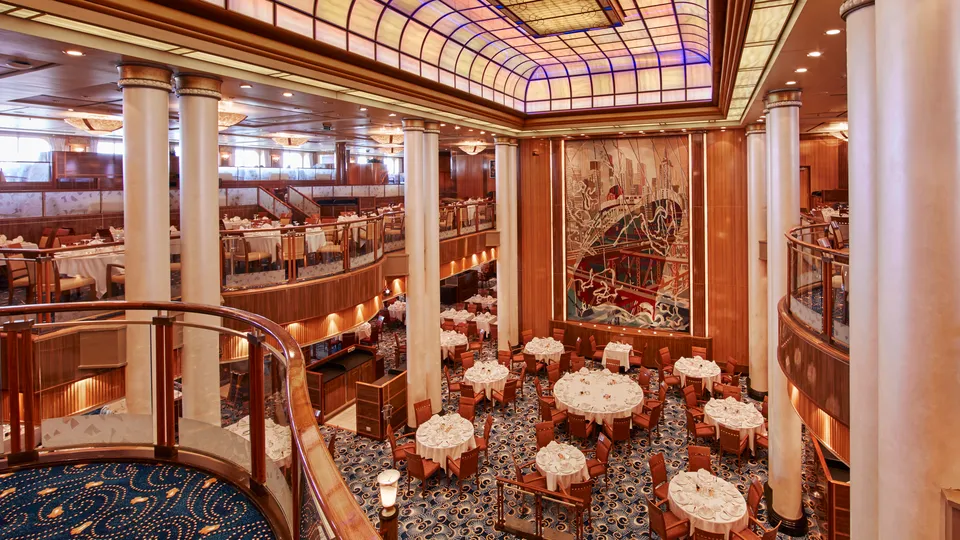Dress codes have always been a part of cruise ships. In the old TV series „The Love Boat,” wearing formal eveningwear was one of the joys of a beach vacation. It’s casual and carefree during the day, but by night the guests are impressive and sophisticated. The less discussed part is the dress code becoming a functional requirement barrier to entry – you need to be in formal attire to fully enjoy the experience.
Most cruise lines have relaxed their dress codes a bit these days – almost none require black tie (even on „formal nights”), but the idea of cruise attire still puts a damper on interest in cruising. As a former travel agent (albeit one who has been working for several years), I often find it difficult to sell cruises to clients who have never been on a cruise before. “I don’t like dressing up,” they’ll say.
Back in the early 2000s, dress codes on cruise ships tended to be stricter, which angered some travelers. Celebrity Cruises even offers a full restaurant menu in an enclosed buffet area for passengers who want to „eat out” on a formal evening but don’t want to comply with that night’s dress code. Since then, cruising has continued to evolve – here’s what you should know about today’s dress code.
The basics
Policies vary between cruise lines, but there are some similarities between brands. During the day, the basic requirements are almost uniform: except at the pool bar or restaurant, passengers must always wear tops, bottoms and shoes when walking on board. Swimming suits are usually only allowed in or near the pool (cafeterias are usually near the pool and drysuits or covered swimsuits are usually allowed).
At dinner, especially in the main dining room, specialty restaurants, bars, nightclubs and theaters, most cruise ships prefer men’s elegant attire and ask passengers not to wear shorts, sleeveless T-shirts, flip-flops and baseball caps. Interestingly, many countries do not publish specific requirements for women, although we can assume that women are not encouraged to wear the same clothing either. A good rule of thumb when taking a cruise is to bring at least one pair of long pants (not jeans) for dinner on the ship.
When it comes to clothing bans, cruise lines often follow similar policies to airlines, prohibiting guests from wearing clothing that contains distasteful or overtly offensive messages.
Formal nights
Most cruise lines host at least one formal evening during a week-long cruise. In the past this meant formal attire, but today expectations are generally more relaxed. In fact, many cruise lines no longer use the word „formal” to describe these nights because it implies formal attire – which is almost never the case these days.
On luxury cruises, certain nights are called „evening wear,” and many passengers dress more formally (think casual wedding attire or what to wear to dinner at a nice restaurant), but as celebrities point out: „smart casual.” The most important thing about these evenings is that daily life in restaurants and theaters remains acceptable. Holland America Line requires men to wear collared shirts and pants in „fine dining restaurants” (i.e. not buffets or fast food counters), at least on „dress up” nights.
It’s a similar story at Carnival, where on „Cruise Style” nights, dress pants and suit shorts are required, jackets are recommended (but not required), and many men wear suits, ties, or tuxedos. Princess Cruises still uses the „Formal Night” moniker and recommends a tuxedo or dark suit, evening gown, formal pantsuit, or cocktail dress. In a rather confusing nomenclature, Norwegian calls its day wear „Cruise Casual” and evening wear „Smart Casual,” and requires men to wear at least a collared shirt and closed-toed shoes.
Cunard, perhaps the most diplomatic line in evening wear, said: „If you want to make an effort in the evening, you won’t be alone.” Some soirees are called „grand evenings,” but Cunard ) suggests using themes such as „Roaring Twenties,” „Black and White,” or „Red and Gold” rather than issuing explicit dress codes.
No matter the type of cruise, the fashion options on board are usually very diverse. Aside from basic requirements (such as no shorts at the table), passengers generally wear what they feel most comfortable in. At several soirees I attended on Cunard’s transatlantic routes, I saw several passengers wearing white ties (I saw more than one). (wearing a top hat that night) while another passenger sat at a nearby table. Look comfortable in an unbuttoned shirt and pants.
Which cruise line has the most relaxed dress code?
Due to the active nature of most expedition cruises such as Lindblad and Hurtigruten, formal (or even dressy) attire is not required on these cruises. Some cruise lines such as Windstar have also waived formal dress codes, while specialty cruises such as Aranui Cruises (a passenger and cargo vessel based in Tahiti) have also done away with formal dress codes. Viking Ocean Cruises also avoids formal evenings, but jeans are not required for dinner.
Virgin Voyages, which may have the loosest policy among the major cruise lines, says: „We encourage you to wear multiple swimsuits to restaurants, please remember to bring shoes, but your style is your style.”
Alternative options to dressing up
Even if your line has formal evening events, don’t let a dress code stop you from taking a cruise. Most cruise lines have relaxed their policies to allow most travelers to wear items from their home wardrobe to formal dinner parties—even if dinner only requires a collared shirt instead of jeans. Do you really want to avoid clothing? Remember, buffets and room service are always available – casual hosts always have the opportunity to treat themselves to a night out and wear whatever they like.





